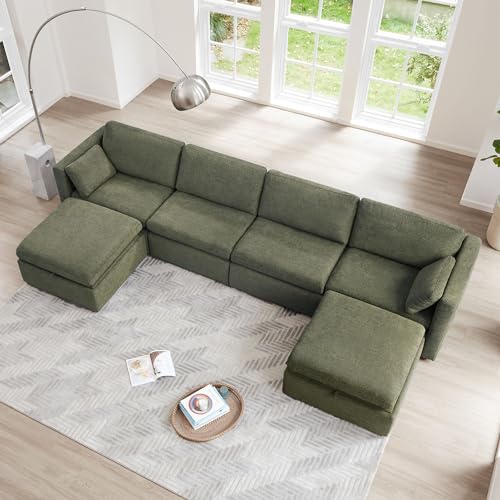The What Are U Shaped Valleys Success Story You'll Never Imagine
페이지 정보
작성자 Carlton 댓글 0건 조회 3회 작성일 24-07-01 06:51본문
 What Are U Shaped Valleys?
What Are U Shaped Valleys?A U-shaped valley is a geomorphological formation with high, steep sides and a flat or rounded valley bottom. These valleys are formed by glaciation. They usually contain lakes or rivers, sandtraps along a golf courses kettle lakes (water hazards) or other natural features.
 Glacial erosion causes U-shaped valleys, caused by the plucking of rocks from the bottom and side of the valley. These valleys are found in mountainous regions across the globe.
Glacial erosion causes U-shaped valleys, caused by the plucking of rocks from the bottom and side of the valley. These valleys are found in mountainous regions across the globe.Glaciers are responsible for the formation of them.
Glaciers are massive masses of ice that form and then move down mountains. As they erode the landscape they create U-shaped valleys with flat floors and steep sides. These are different from river valleys which are usually shaped in the shape of a V. While glacial erosion can occur anyplace but these valleys tend to be more common in mountainous regions. In fact, they are so distinct that you can tell whether the landscape was formed by glaciers or rivers.
The process of creating a U shape valley begins by creating a V shaped river valley. As the glacier recedes, it encroaches upon the V-shaped valley of the river and creates a U-shaped inverted shape. The ice also scrubbing the land's surface creating straight and high walls along the sides of the valley. This process is known as glaciation and requires an enormous amount of strength to scour earth this way.
As the glacier continues to degrade the landscape, it also makes the valley bigger and deeper. The glacier's ice is less frictional than the rocks. As the glacier moves down the valley, it creates abrasion on the rock surfaces and pulls the weakend rocks away from the valley wall through a process called plucking. These processes help to smooth, widen and deepen the U-shaped valley.
This can cause small valleys to "hang' above the main one. The valley may be filled with ribbon lakes, which are formed when water flows through the glacier. The valley is also characterized by striations, ruts, and till on the sides, as well as moraines and till on the floor.
The world is full of U-shaped valleys. They are typically located in mountainous regions like the Andes Mountains, Alps Mountains, Himalaya Mountains, Caucasus Mountains, and Rocky Mountains. In the United States, they are often located in national parks. Examples include Glacier National Park and the Nant Ffrancon Valley in Wales. In certain instances the valleys can extend to coastal locations and become fjords. This is a natural process that occurs when the glacier melts. It could take thousands of years to build these valleys.
They are deep
U-shaped valleys are distinguished by steep sides that curve towards the bottom and a wide flat valley floor. They are formed by river valleys that were filled with glaciers during the Ice Age. The glaciers erode the valley's floor through abrasion and plucking which causes the valley to deepen and broaden more equally than a river would. These types of features are found in mountainous regions all over the globe including the Andes Mountains, Alps Mountains, Himalayas Mountains, Rocky Mountains and New Zealand.
The erosion of glaciers in the valley could transform it into a U-shaped valley by expanding and deepening it. The erosive power of the glacier can cause smaller side valleys to hang above the main valley, that is typically characterized by waterfalls. These features are called "hanging valleys" because they hang above the main valley when the glacier recedes.
These valleys are usually covered by forests, and can contain lakes. Some valleys can be used for farming while others are filled with water. A majority of these valleys are in Alaska in the region where glacial melt is the most evident.
Valley glaciers are huge flowing ice like rivers that slowly slide down the slopes of mountains during a glaciation. They can be as deep as over 1000 feet, and are the most prevalent form of valley erosion in regions of alpine. They consume the rock on the bottom of the valley and leave behind depressions or holes that are then filled with water. The resulting lakes are large and thin and they are located in the peaks of certain mountains.
A glacial trough is yet another kind of valley. It is an U shape valley that extends into the saltwater to form the Fjord. They are prevalent in Norway in Norway, where they are called fjords, but are also found in other regions of the world. They are created by melting ice and are visible on maps around the globe. They are usually characterized by rounded sides that resemble an U shape in cross-section as well as steep sides. The trough walls are generally made of granite.
The slopes are steep
A U-shaped valley is a geological feature with steep, high sides and a flat base. They are very frequent in mountainous regions and are usually carved by glaciers. This is due to glaciers' slow movement downhill and scour the land. Scientists used to believe that glaciers couldn't create valleys because they are so soft but now we know they do create these shapes.
Glaciers create distinctive u-shaped valleys through the processes of plucking as well as abrasion. Through erosion these processes may widen, steepen, and deepen V formed valleys of rivers. They also change the slopes of the valley floor. These changes occur in the front of a glacier when it moves through a valley. This is the reason why the U form valley is typically wider at the top and narrower at the bottom.
Sometimes, U-shaped valleys may be filled with lakes. These lakes are known as kettle lakes and they form in hollows which were eroded out of the rock by the glacier, or were dammed by moraine. The lake could be a temporary feature while the glacier melts or remains even after the glacier has receded. They are often associated with cirques.
Another type of valley is one with a flat floor. It is a valley that is formed by streams that erode the soil, however it isn't the same steep slope as a U-shaped valley. They are typically located in mountainous areas and can be older than other kinds of valleys.
There are many kinds of valleys across the globe. Each one has its own distinct appearance. The most common type of valley is the V-shaped one, but there are also U-shaped and rift valleys. A rift valley is formed when the earth's surface is splitting apart. These are often narrow valleys with steep sides. This is evident in the Nant Ffrancon Valley, located in Snowdonia.
There are many different kinds of common.
U-shaped valleys are characterized by their broad bases, unlike V-shaped ones. Glaciers are responsible for creating these valleys, which are typically located in mountain ranges. Glaciers are huge blocks of snow and ice which erode the landscape as they slide downhill. They degrade valleys by crushing the rocks with friction and abrasion. This is referred to as the scouring. The glaciers erode the landscape in a distinctive U-shaped design. These valleys, also referred to as U-shaped valleys, can be found in a variety of locations across the globe.
The formation of these valleys occurs when glaciers alter existing river valleys. The glacier's slow movement and weight erodes the valley sides and floor and creates a distinctive U shape. This process, known as glacial erosive erosion, has created some of the most beautiful landscapes on Earth.
These valleys are often referred to as glacial troughs or troughs. They are found all over the globe, but are particularly found in areas with glaciers and mountains. They range in size from a few meters to hundreds of kilometers. They also differ in length and depth. The temperature fluctuation will be higher the deeper the valley.
A fjord, or a ribbon lake is formed when a U-shaped valley is filled with water. The ribbon lakes are formed in the depressions where the glacier eroded the rock that was less resistant. They also can form in a valley where the glacier was halted by a wall of moraine.
In addition to ribbon lakes, Modular Beige U-Shaped Sectional Sofa with Ottoman valleys may also have glacial features, such as hanging valleys, erratics and moraine dams. Erratics are massive boulders that were dumped by the glacier during its movement. They are commonly used to define the boundaries of glaciated areas.
These smaller valleys are left 'hanging" above the main valley that was created by the glacier. They aren't as deep as the main valley and sofasandcouches they are ice-free. They are carved by glaciers that tributary to the main valley and are often covered by waterfalls.

